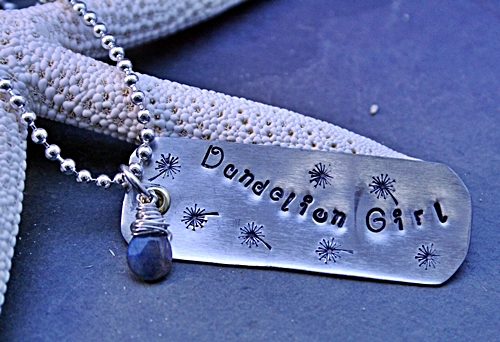 My seven year old daughter has a necklace I made her that says “Dandelion Girl” . I made it for her because she remains enamored with these cheerful yellow flowers despite other people’s best attempts to disillusion her. To her they are not weeds, but pretty flowers that turn to a white puff ball that a nature-made toy. Imagine my surprise when I came across an article referring to the genetics of “Dandelion Children”.
My seven year old daughter has a necklace I made her that says “Dandelion Girl” . I made it for her because she remains enamored with these cheerful yellow flowers despite other people’s best attempts to disillusion her. To her they are not weeds, but pretty flowers that turn to a white puff ball that a nature-made toy. Imagine my surprise when I came across an article referring to the genetics of “Dandelion Children”.
The name come from a Swedish expression describing dandelion children as those who can survive and thrive in whatever circumstances they encounter. The opposite of these are “Orchard Children”, children who are highly sensitive to their surroundings and when properly nurtured, blossom, often spectacularly, but when neglected often fail just as spectacularly. The article I read referred to a 2005 paper published in the journal Development and Psychopathology (1) that described these highly sensitive children as having both a great potential to excel or fail depending upon how nurturing or neglectful of an environment they lived in.
This idea of the Orchid Child who could flourish or wither was novel, and scientist began to ask if there could be a genetic component to this sensitivity. To begin looking for genes that might be involved, one team turned to a gene called CHRM2, which has already been implicated in alcohol dependency and codes a receptor that is involved in many brain functions including learning and memory.
For test subjects the researchers used a group of more than 400 boys and girls who had been involved in a larger child development study since around the age of 4 and were now in their late teens (2). The scientist combined genetic analysis with parental and child surveys and found an interesting result. Children with certain variations of the CHRM2 gene seemed to respond to parental negligence in a way that produced the least desirable teenage behavior, while children with this same variation responded to nurturing homes with the best teenage behavior. Put another way, these Orchid children were more likely than their Dandelion counterparts to wither in a neglectful home and more likely than a Dandelion child to excel in a nurturing home. These results suggest that the answer to the question of ‘Nature versus Nurture’ might be both, neither or one or the other.
It may turn out that the CHRM2 gene has nothing to do with the so called Orchid Children, or it might just be the first piece to a complicated puzzle. Either way, I found myself looking at my kids a bit differently. Is my daughter really a Dandelion or is she an Orchid? The truth is it doesn’t matter; to me my daughter will always be my Dandelion Girl.
References
- Ellis, B.J., Essex, M.J. and Boyce, W.T. (2005) Biological sensitivity to context: II. Empirical explorations of an evolutionary-developmental theory. Dev. Psychopathol. 17, 303–28.
- Dick, D.M., et al. (2011) CHRM2, parental monitoring, and adolescent externalizing behavior: evidence for gene-environment interaction. Psychol. Sci. 22, 481–9.
